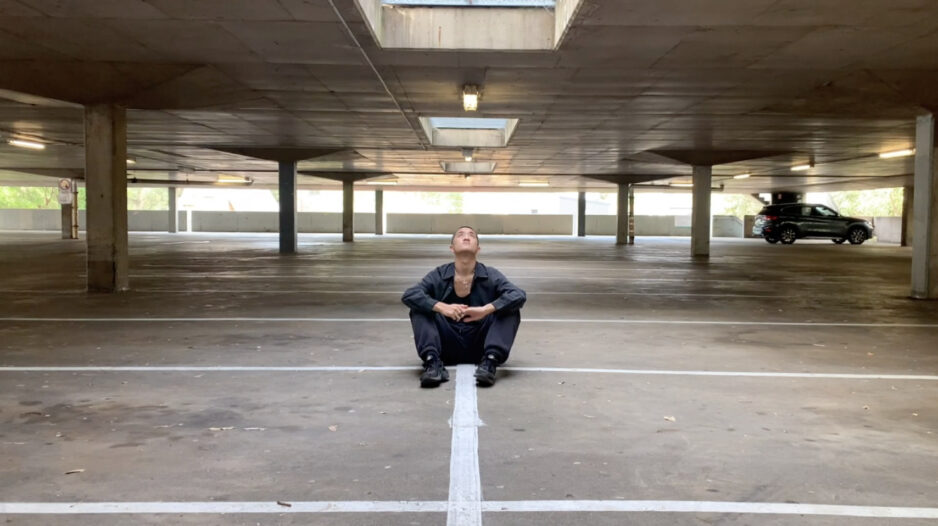Home | Blog | Sharp Short Dance in the Digital Realm
Sharp Short Dance in the Digital Realm
Another year of Sharp Short Dance is done and dusted. Or is it? Amidst all the Covid palava a few bonuses have come to light and one major tick is that the digital platform has enabled a longer, what we would previously have called, season. Many organisations have left digital performances on viewing platforms longer to capture a lagging market of audiences, who would have otherwise missed the event held in an auditorium.
That’s not the only difference though. Remember when the ability to hail a performance as site specific lent a work a certain artistic cachet, when venturing outside the parameters of the flat rectangular floor, encased in an open-ended black oblong cube-like structure, was considered an act of risk? Well not anymore.
In indigenous terms the primary criteria for dancing ‘on country’ is to feel the earth underfoot on one’s ancestral lands. Upon considering the latest enforced digital impact in relationship to the contemporary dance idiom, the Covid epidemic has inadvertently achieved bigger inroads toward the decolonisation of the theatrical space than even the radical acts of the avant-garde although some would argue “Them’s fightin’ words!”
While I was watching the footage of the first winner for best male dancer Taiga Kita-Leong whose choreography WITHIN was predominantly set within the concrete confines of a car park, it was the clean angular planes and the camera angles which alternated from a landscape to a topographic perspective which prompted me to simultaneously recall the first time I saw footage of postmodernist choreographer Trisha Brown’s 1971 groundbreaking Man Walking Down the Side of a Building. Similarly to Brown’s Man Walking, which literally flipped the danced space on its side, Taiga’s editing along with his shadowy duplicates managed to unhinge my sense of perspective which achieved its goal: to emulate the volatility of the inner psyche.
It was Collision choreographed by Sage Price winning in the Outstanding Ensemble category -opening upon dancers equidistantly spaced, placed on different tiers of a large tiered concrete, while executing a visually effective vocabulary of gestures initiated by a repetition of small rhythmic hand taps against their sides, before the scene shifted to the dancers interacting in close proximity to each other – that again reminded me of another of Trisha Brown’s choreographies. Also created in 1971, Roof Piece originally took place on twelve rooftops spanning ten New York City blocks. Scale aside, the two aforementioned Sharp Short Dance winner’s works were evocative of Trisha Brown in their aesthetic juxtaposition of architectural utility and humanity.
Although the avant-garde post-modernist dance artists set a precedent in reopening our eyes to the potential for reintegrating dance into the lives of everybody in the pedestrian habitats of the everyday, audiences were still clamouring for their coveted often overpriced seats to consume dance indoors. All right I concede, technically we are still taking a seat, but we are engaging much more actively. We are able to lounge in smaller real time groups while simultaneously chatting en masse in the borders of the screens, talking and texting while the action is ongoing. We have broken long held rules of etiquette by urging others to join in, via social media, midway through a performance.
Was it really only two years ago that I made demands for an audience lock-out every time I delivered lengthy passages of text?
It’s not all roses and sunshine though because I can identify two downsides to the digital realm. For the younger performers, it is to learn the tacit etiquette of stagecraft. We learn how to conduct ourselves in the theatre through mimicry of the behaviour modelled by the more experienced practitioners. The older, more experienced performers subsequently assume roles of leadership in a softer, less defined context. A network of relationships are forged backstage beforehand and in foyer afterward. (My mother has noted on more than one occasion that she prefers foyer Vicki. I have consistently replied, “That’s because foyer Vicki is working.”)
I noticed the age of the finalists this year was more consistent, although I miss the frenetic energy of the younger contestants. I always marvel at the young genius who inevitably appears. (I am also more than a little envious and momentarily begrudge my comparative misspent youth.) I also miss the hooting and hollering from close family and friends. You can always locate a close contact via the volume of correlating support.
I specifically didn’t supply much in terms of reflection in this blog as I encourage you to read about the winners and watch the footage of their dances while it’s still up and more importantly there is still an opportunity to donate towards next year’s Sharp Short Dance event. So peruse the other pages on our website.
Lastly this year’s most popular artist as voted by the public, Zana Rockwell, proved that you don’t need a big budget nor an outlandish concept to win the minds and affections of the viewers. Shot in close up, in what appears to be her bedroom Rockwell’s Life in 2021 playfully reminded us that it’s not all over yet. So stay safe everybody, until next month…
Vicki Van Hout
FORM Blogger in Residence
Image: Taiga Kita-Leong from WITHIN

